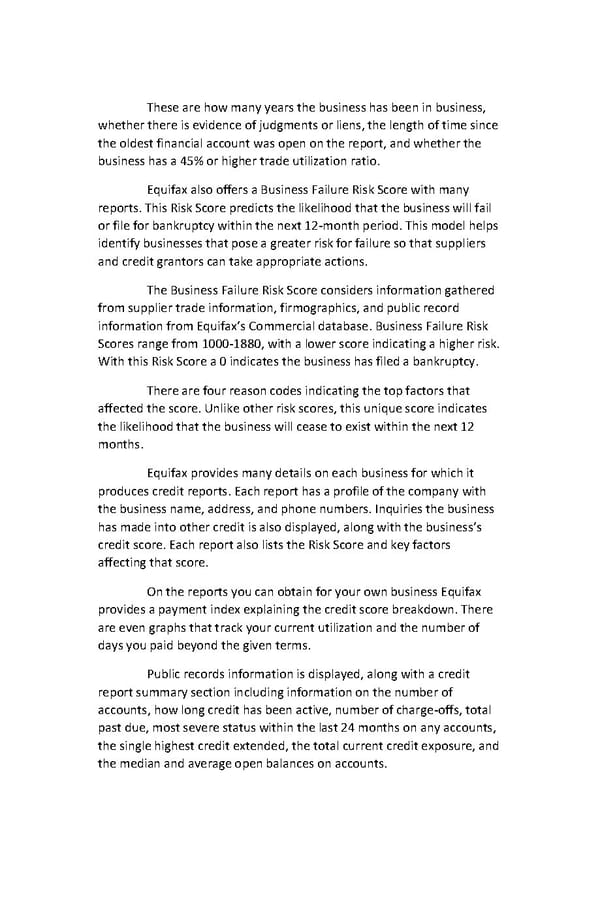These are how many years the business has been in business, whether there is evidence of judgments or liens, the length of time since the oldest financial account was open on the report, and whether the business has a 45% or higher trade utilization ratio. Equifax also offers a Business Failure Risk Score with many reports. This Risk Score predicts the likelihood that the business will fail or file for bankruptcy within the next 12-month period. This model helps identify businesses that pose a greater risk for failure so that suppliers and credit grantors can take appropriate actions. The Business Failure Risk Score considers information gathered from supplier trade information, firmographics, and public record information from Equifax’s Commercial database. Business Failure Risk Scores range from 1000-1880, with a lower score indicating a higher risk. With this Risk Score a 0 indicates the business has filed a bankruptcy. There are four reason codes indicating the top factors that affected the score. Unlike other risk scores, this unique score indicates the likelihood that the business will cease to exist within the next 12 months. Equifax provides many details on each business for which it produces credit reports. Each report has a profile of the company with the business name, address, and phone numbers. Inquiries the business has made into other credit is also displayed, along with the business’s credit score. Each report also lists the Risk Score and key factors affecting that score. On the reports you can obtain for your own business Equifax provides a payment index explaining the credit score breakdown. There are even graphs that track your current utilization and the number of days you paid beyond the given terms. Public records information is displayed, along with a credit report summary section including information on the number of accounts, how long credit has been active, number of charge-offs, total past due, most severe status within the last 24 months on any accounts, the single highest credit extended, the total current credit exposure, and the median and average open balances on accounts.
 Mastering Business Credit (Preview) Page 18 Page 20
Mastering Business Credit (Preview) Page 18 Page 20